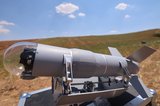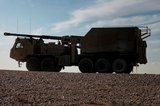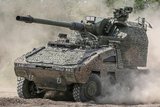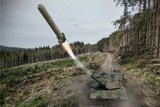Dedicated drone munitions could unlock modular mission potential
Top attacks have proven effective against heavily armoured vehicles in Ukraine. A new family of uncrewed aerial system-delivered munitions is looking to press that advantage further.
Roke Manor Research will lead a team of specialists to assess, mature and integrate innovative sensor technology for the dismounted close combat infantry soldier under a research programme being funded by the UK Government’s Defence Science and Technology Laboratory (Dstl). The company’s selection for the three-year, £5 million contract for the Dismounted Close Combat Sensors (DCCS) research programme was announced on 14 March.
Led by Roke, the team of specialists - drawn from across industry and academia - will conduct work to develop an open system architecture, in line with the developing Generic Soldier Architecture (GSA), to allow for the integration of multiple sensor-based subsystems, such as acoustic, thermal imaging and RF subsystems. The system would enhance situational awareness, facilitate collaborative targeting and increase operational tempo, while minimising the size, weight and power burden on the soldier.
The DCCS research programme team comprises Roke as prime, SEA and QinetiQ, performing a comprehensive system integration, architecture and experimentation role. The team will work with a wide range of technology and exploitation partners, in an open framework, to assess and integrate sensor technologies. Roke will also work closely with Dstl to ensure the objectives of the programme are met.
David Massey, programme lead for Dstl’s C4ISR Domain, said: ‘The DCCS research to be delivered by Roke is an important programme for the Ministry of Defence. The intent is to develop the UK’s dismounted soldier as an integrated sensor capability within the wider ISTAR enterprise, thus providing him with greater local and shared situational awareness whilst increasing his overall combat effectiveness. Over the next three years, Roke, along with its partners, will be developing the key low-power, low-weight sensor and processing technologies that will realise the benefits envisaged.’
James Fisher, business sector manager, Roke, said: ‘The team will be casting the net wide to identify novel sensor technologies, developing them into workable solutions that improve military capability and therefore maximise the return on this programme’s investment.
‘As a team, we will deliver a complete range of industry and technology expertise that will optimise the programme’s results. Roke has a proven pedigree of complex, consortium-based research activities. Coupled with our industry-leading capabilities in the soldier sensor technology space, we have a thorough understanding of how to exploit research to deliver effective technologies.’

Top attacks have proven effective against heavily armoured vehicles in Ukraine. A new family of uncrewed aerial system-delivered munitions is looking to press that advantage further.

The Israeli company hopes that producing its Sigma artillery system wholly in the US will help it win a key US Army contract, but it will be up against the popular CAESAR Mk II wheeled weapon and the K9 tracked.

Germany has ordered 84 RCH 155 self-propelled guns, as system incorporating Boxer 8×8 vehicles and the Artillery Gun Module, and 200 Puma Infantry Fighting Vehicles while the UK has committed to a single Early Capability Demonstrator RCH 155.

While integration of guided weapons on modern armoured vehicles usually takes the form of a podded launcher on the turret exterior, recent developments suggest the concept of firing missiles from a tank’s main gun could be seeing a revival.

The order is a further boost for the Common Armoured Vehicles System programme which has notched notable successes in the past 12 months. The first vehicle, made in Finland, will be delivered next year with local production expected to ramp up in 2027.

The French and German governments signed an agreement in June 2018 to cooperate on the development of a new main battle tank under the Main Ground Combat System programme but the effort has struggled. This new agreement may damage it further.